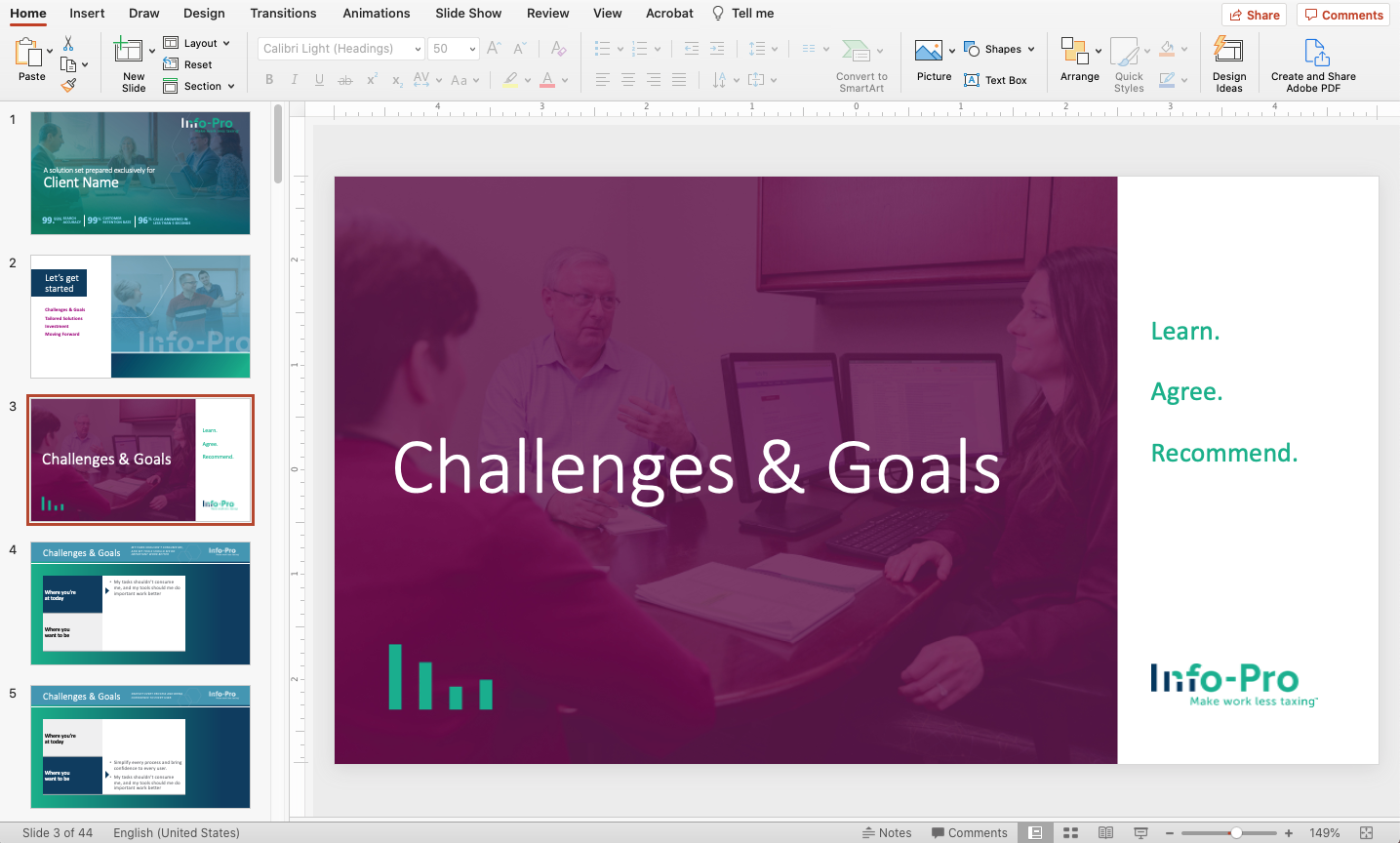Keep marketing projects organized better with these helpful tips

January 3, 2022

When the projects pile up, staying organized and keeping your team on the same page can be a challenge. From trying to find the right files to tracking document changes from multiple people, having an organized process in place can save loads of time, eliminating unnecessary back and forth communication.
To help your marketing team collaborate better and work faster, here are smart tips for keeping project assets organized.
Catalog project names with numbers.
Use a numbered naming system to keep track of different clients and jobs. For example, we name our files with the client name, the job number, and project name—such as ABC1-3 Product Brochure. Numbers are easy to reference and make searching and keeping track of projects easier.
Organize subfolders by file types.
When creating a project folder, organize the subfolders by file type, such as InDesign, PDFs, Images and more. This way your designers, copywriters, and art directors will be able to find the files they need easier.

Within a project folder, organize by file type.
Color code files with tags.
Use the tag feature to make folders and files easy to find. For example, tag the most recent file in a folder green to ensure everyone is using the right file, or tag a working file yellow so someone knows which file they’re supposed to reference. To add a tag on a Mac, simply right click on the folder or file and choose from the colored tag options. You can add multiple tags to a file if needed. If you want to leverage tag searching or filtering, make sure you communicate with your team so that everyone uses tags consistently.
Use Google Drive to collaborate better.
When working with multiple people, take advantage of Google Docs, Sheets and Slides collaboration tools. Google enables you to keep track of all changes made in a document, and eliminates the need to email updated files back and forth. Check out our Google Drive tips to leverage the platform’s full capabilities.
Establish separate photo and video categories.
Whether you’re saving these files on your server or on a file hosting service such as DropBox or Microsoft OneDrive, always keep original files in a separate folder from working or final files. This strategy creates an “archive”, ensuring you are always able to revert to the initial product if needed. Some projects may have a lot of working files, so keeping old versions separate from the most up-to-date one helps ensure the accurate file is always being used. Keeping final files separate also ensures the correct assets are delivered to all parties. To help people locate items faster, organize by categories and use dates or tags as secondary descriptions.
We like to give clients a PDF with thumbnail images of every photo shoot and video shoot so they have a record of master images and outtakes. In PDF format, everyone on the client team will be able to know what’s available and the image number to request.
Sending large files and tracking download.
If you need to send large files to someone outside of your organization, WeTransfer is a great tool for transferring files up to 200 GB quickly and securely. It also enables you to track downloads and see the status of all your transfers in one simple overview.
Use Zoho as an index tool for logging projects.
We use Zoho Creator to keep track of projects. This way any team member can add jobs as needed, following a standard process. When creating a job, notes can be included to communicate deliverables with others—such as referencing an old job number, publication number, or PO information.
It’s not uncommon for us to receive a request for project files or images from 15 years ago and send them within minutes. Everything on Zoho is always updated and accessible from anywhere, ensuring accuracy and efficiency.
Those are just a few quick tips for staying organized and working efficiently. What tricks do you have up your sleeve? Let us know!

![10 Little-Known Google Chrome Features That Are a Big Help [Video Tutorials]](https://blog.mzltd.com/hubfs/Images/chrome-tips-blog-770.jpg)



